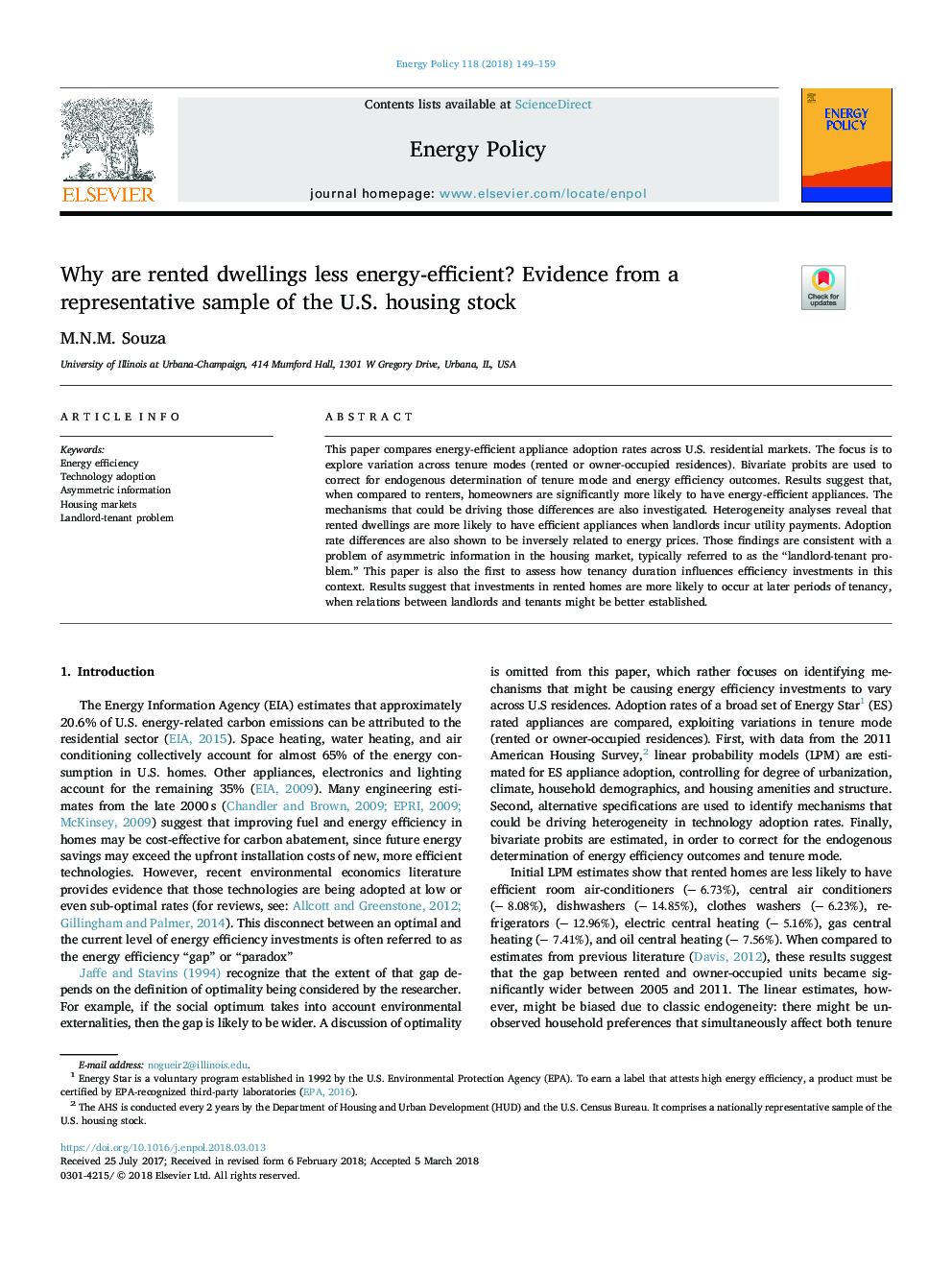| Article ID | Journal | Published Year | Pages | File Type |
|---|---|---|---|---|
| 7397247 | Energy Policy | 2018 | 11 Pages |
Abstract
This paper compares energy-efficient appliance adoption rates across U.S. residential markets. The focus is to explore variation across tenure modes (rented or owner-occupied residences). Bivariate probits are used to correct for endogenous determination of tenure mode and energy efficiency outcomes. Results suggest that, when compared to renters, homeowners are significantly more likely to have energy-efficient appliances. The mechanisms that could be driving those differences are also investigated. Heterogeneity analyses reveal that rented dwellings are more likely to have efficient appliances when landlords incur utility payments. Adoption rate differences are also shown to be inversely related to energy prices. Those findings are consistent with a problem of asymmetric information in the housing market, typically referred to as the “landlord-tenant problem.” This paper is also the first to assess how tenancy duration influences efficiency investments in this context. Results suggest that investments in rented homes are more likely to occur at later periods of tenancy, when relations between landlords and tenants might be better established.
Related Topics
Physical Sciences and Engineering
Energy
Energy Engineering and Power Technology
Authors
M.N.M. Souza,
